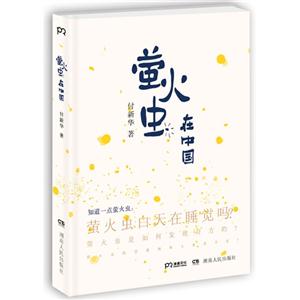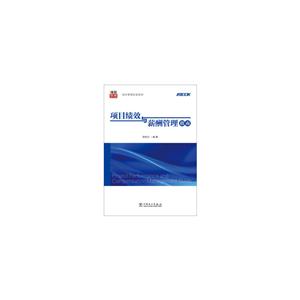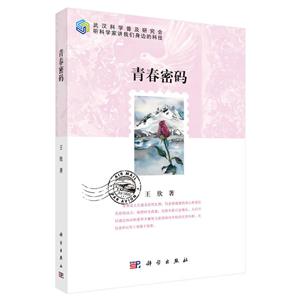半导体 超导体 磁性材料 绝缘体 电介质 其他电气材料-材料手册-4

|
半导体 超导体 磁性材料 绝缘体 电介质 其他电气材料-材料手册-4作者:卡达雷利 开 本:32开 书号ISBN:9787560344508 定价:68.0 出版时间:2014-04-01 出版社:哈尔滨工业大学出版社 |
8.1.4 capacitance
8.1.5 temperature coefficient of capacitance
8.1.6 charging and discharging a capacitor
8.1.7 capacitance of a parallel-electrode capacitor
8.1.8 capacitance of other capacitor geometries
8.1.9 hectrostatic energy stored in a capacitor
8.1.10 hectric field strength
8.1.11 hectric hux density
8.1.12 microscopic hectric dipole moment
8.1.13 polarizability
8.1.14 macroscopic electric dipole moment
8.1.15 polarization
8.1.16 hectric susceptibility
8.1.17 dielectric breakdown voltage
8.1.18 dielectric absorption
8.1.19 dielectric losses
8.1.20 loss tangent or dissipation factor
8.1.21 dielectric heating
8.2 physical properties of insulators
8.2.1 insulation resistance
8.2.2 volume hectrical resistivity.
8.2.3 temperature coefficient of electrical resistivity
8.2.4 surface hectrical resistivity
8.2.5 leakage current
8.2.6 si and cgs units used in hectricity
8.3 dielectric behavior
8.3.1 hectronic polarization
8.3.2 ionic polarization
8.3.3 dipole orientation
8.3.4 space charge polarization
8.3.5 effect of frequency on polarization
8.3.6 frequency dependence of the dielectric losses
8.4 dielectric breakdown mechanisms
8.4.1 hectronic breakdown or corona mechanism
8.4.2 thermal discharge or thermal mechanism
8.4.3 internal discharge or intrinsic mechanism
8.5 hectrostriction
8.6 piezoelectricity
8.7 ferroelectrics
8.8 aging of ferroelectrics
8.9 classification of industrial dielectrics
8.9.1 class i dielectrics or linear dielectrics
8.9.2 class ii dielectrics or ferroelectrics
8.10 selected properties of insulators and dielectric materials
8.11 further reading
9 miscellaneous hectrical materials
9.1 thermocouple materials
9.1.1 the seebeck effect
9.1.2 thermocouple
9.1.3 properties of common thermocouple materials
9.2 resistors and thermistors
9.2.1 electrical resistivity.
9.2.2 temperature coefficient of electrical resistivity
9.3 electron-emitting materials
9.4 photocathode materials
9.5 secondary emission
9.6 electrolytes
9.7 electrode materials
9.7.1 electrode materials for batteries and fuel cells
9.7.2 intercalation compounds
9.7.3 electrode materials for electrolytic cells
9.7.3.1 industrial cathode materials
9.7.3.1.1 low-carbon steel cathodes
9.7.3.1.2 aluminum cathodes
9.7.3.1.3 titanium cathodes
9.7.3.1.4 zirconium cathodes
9.7.3.1.5 nickel cathodes
9.7.3.1.6 mercury cathode
9.7.3.2 industrial anode materials
9.7.3.2.1 precious-and noble-metal anodes
9.7.3.2.2 lead and lead-alloy anodes
9.7.3.2.3 carbon anodes
9.7.3.2.4 lead dioxide (pbo2)
9.7.3.2.5 manganese dioxide (mno2)
9.7.3.2.6 spinel (ab2o4)- and perovskite (abo3)-type oxides
9.7.3.2.7 ebonex(ti4o7 and ti5o9)
9.7.3.2.8 noble-metal-coated titanium anodes (nmct)
9.7.3.2.9 platinized titanium and niobium anodes (70/30 pt/ir)
9.7.3.2.10 dimensionally stable anodes (dsa) for chlorine evolution
9.7.3.2.11 dimensionally stable anodes (dsa) for oxygen
9.7.3.2.12 synthetic diamond electrodes
工业技术 一般工业技术
在线阅读
- 最新内容
- 相关内容
- 网友推荐
- 图文推荐
上一篇:半导体物理性能手册-第1卷
下一篇:水资源保护-饮水安全与人类健康
零零教育社区:论坛热帖子
| [高考] 2022 西安电子科技大学《软件工程》大作业答案 (2022-04-25) |
| [家长教育] 孩子为什么会和父母感情疏离? (2019-07-14) |
| [教师分享] 给远方姐姐的一封信 (2018-11-07) |
| [教师分享] 伸缩门 (2018-11-07) |
| [教师分享] 回家乡 (2018-11-07) |
| [教师分享] 是风味也是人间 (2018-11-07) |
| [教师分享] 一句格言的启示 (2018-11-07) |
| [教师分享] 无规矩不成方圆 (2018-11-07) |
| [教师分享] 第十届全国教育名家论坛有感(二) (2018-11-07) |
| [教师分享] 贪玩的小狗 (2018-11-07) |






